Highs and Lows: Mini 6000 Expedition Leg 4
The team comes face to face with the hazards of altitude.
It was several weeks since we’d left Montevideo, and 1,700 miles had passed beneath our wheels since the start of the expedition, but already the conventional ‘road trip’ phase of the trip had become a memory. For the past week, we’d been gradually climbing higher, acclimatising ourselves to both the thinner air and the rougher conditions beneath our wheels. But a week into the climb, with the Mini’s onboard altimeter reading 4,300 metres above sea level, it was time to begin the adventure proper. Our goal for this stage of the drive was 5,250 metres up, on the flanks of Ojos del Salado, the highest volcano in the world. Known as Refugio de Atacama, it is a flat, windswept area of land which serves as a high camp for those attempting to climb the mountain, and can be reached via a rough pickup track.
We carried on our acclimatisation cautiously, leaving Laguna Verde’s tranquil shores to climb another 180 metres, overnighting at an abandoned border checkpoint which now serves as a run-down shelter for passing climbers. An altitude gain of 180 metres doesn’t sound like much, but it pays to acclimatise slowly, and even when you do, the unpredictability of the thin air means things don’t always go to plan, however careful you are – as we were soon to find out.
The following morning, we headed into the wilderness, following the rutted 4x4 tracks which take climbers to Refugio de Atacama. The total distance to be covered was just 16 miles, but we’d be ascending over 700 metres in the course of the drive. Now, 16 miles may not sound like a lot, but when it’s on consistently uphill, sandy tracks, and you’re at the wheel of a classic Mini, it’s still quite a challenge. That being said, the Mini acquitted itself rather well in the first few miles, bouncing its way along the corrugated dirt, swerving this way and that round the rocks and boulders which, while they wouldn’t trouble the typical Japanese pick-up which is the usual vehicle to traverse these tracks, represent a real and present danger to the typical Mini-motorist.
At least the boulders didn’t stop the Mini, which is more than can be said for the soft sand which greeted us as we passed 4,700 metres of altitude. The 4x4s had left deep ruts in this sand, on which the Mini bottomed out, while with only two driven wheels, it had neither the traction nor the grunt to plough its way through the sediment.
Rather than use the Mini’s Range Rover travelling companion to drag Daisy across the obstacle, we decided to do things the hard way. Using sand ladders and planks of wood, we manhandled Daisy across the three stretches of soft sand which blocked her passage, before setting up camp for the night, at an elevation of 4,830 metres. Or, to put it another way, higher than any mountain in Western Europe.
The next day, we made our health checks as usual, measuring blood-oxygen, heart rate and general wellbeing. Unfortunately, despite our careful acclimatisation, the unpredictability of high elevations raised its head, and one of our team members awoke feeling under the weather.
We spent the whole day and the following night at the campsite, which, due to the strong winds which whipped through it, lifting volcanic grit and sandblasting us for the whole day, we named ‘Hell Camp’. Thirty-six hours of camp-bound misery later, things were looking somewhat up, and so we decided to carry on, keeping a close eye on our still-not-perfect team member’s health.
The thin air was really taxing the Mini now. Despite its supercharger and low gearing, pulling away at elevations of over 5,000 metres was a tricky exercise in clutch control, especially on any kind of incline, and the only way to make any upward progress was to maintain momentum. This meant driving faster than one would strictly like, while dodging the worst of the rocks and ruts that the track can offer. However, at times even this wasn’t enough to make progress, and for the first time the Range Rover offered towing services to the Mini.
And so, our stuttering progress continued until we found ourselves on a plateau, 5,100 metres up and gazing over towards the volcano which was our ultimate objective – Ojos del Salado – and at its base, Refugio de Atacama, a few miles away.
It was at this altitude that the gradually worsening condition of our team member became critical. With a blood-oxygen dropping quickly towards the low-70s, a sudden headache and other symptoms, there was only one sensible course of action. It was time to go down. Turning our back on our objective, we piled back into the cars and sought out the thicker air of low altitude. Down we bounced, past Hell Camp and through the soft sand, this time having no qualms about towing the Mini across. And, a few hours later, we were back on the sublime shores of Laguna Verde, where we’d started from, the thicker air working its magic on our team mate already.
We’d spent two days getting exactly no-where, but that wasn’t important. What really mattered was, when the unpredictable effects of altitude became apparent, we’d acted quickly and decisively, and averted a potentially life-threatening situation.
The mountains would still be there the following day. The trick is ensuring you are, too.
Words & Photography Ben Coombs Twitter/X | Instagram
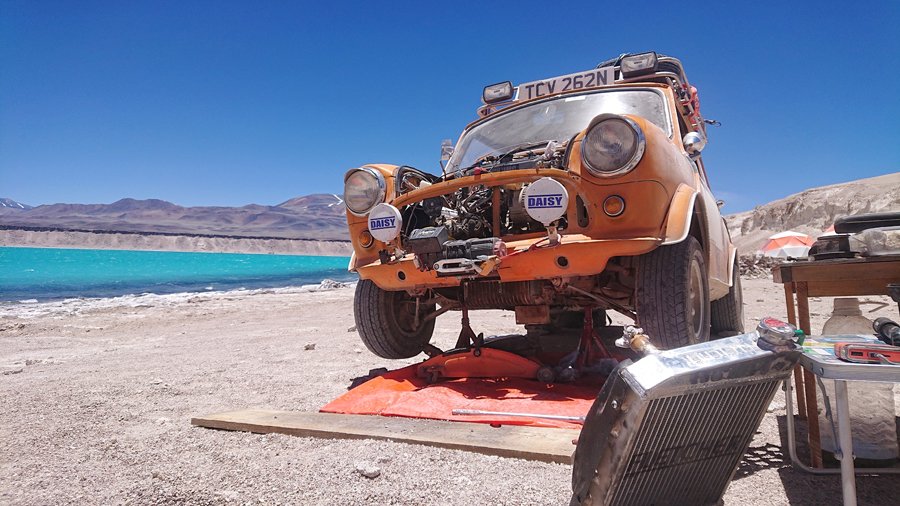
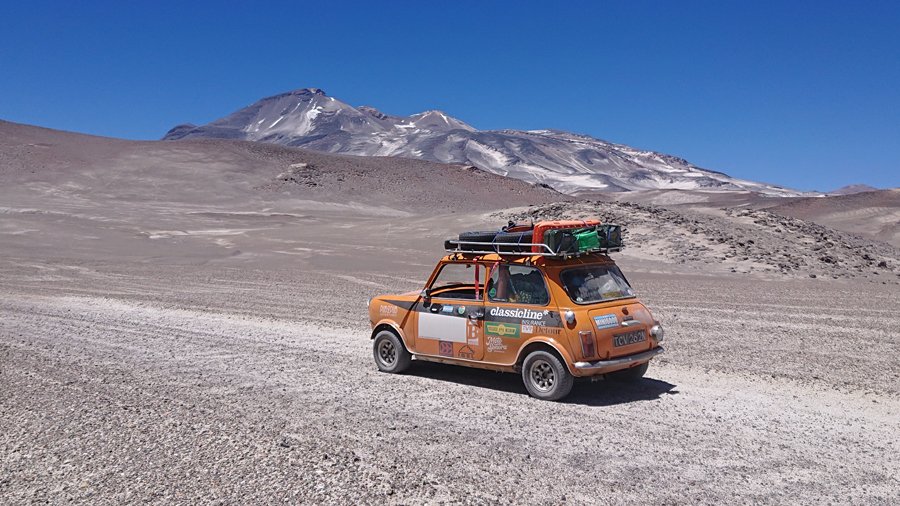
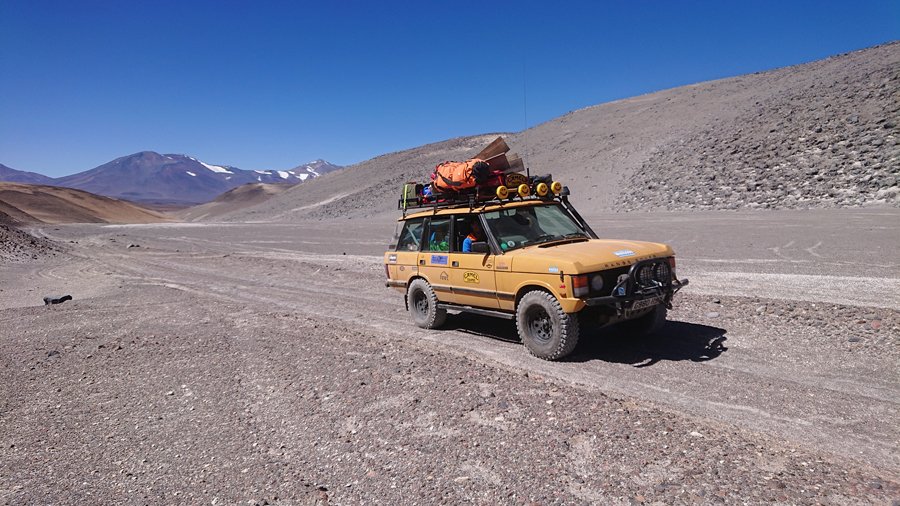


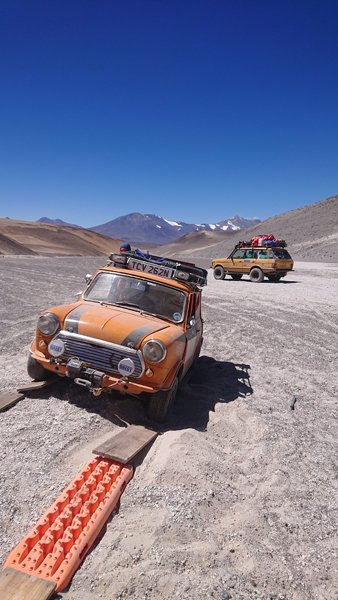

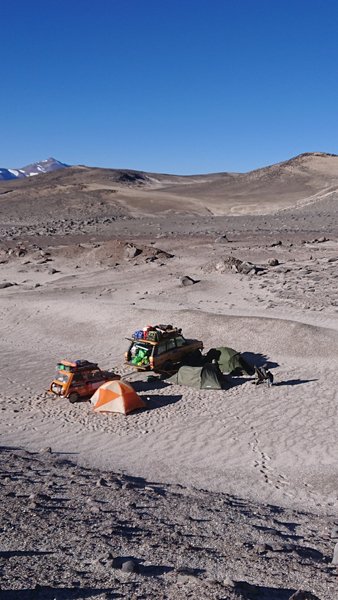











The Mini 6000 Expedition ends with a lengthy drive back to the Atlantic coast.